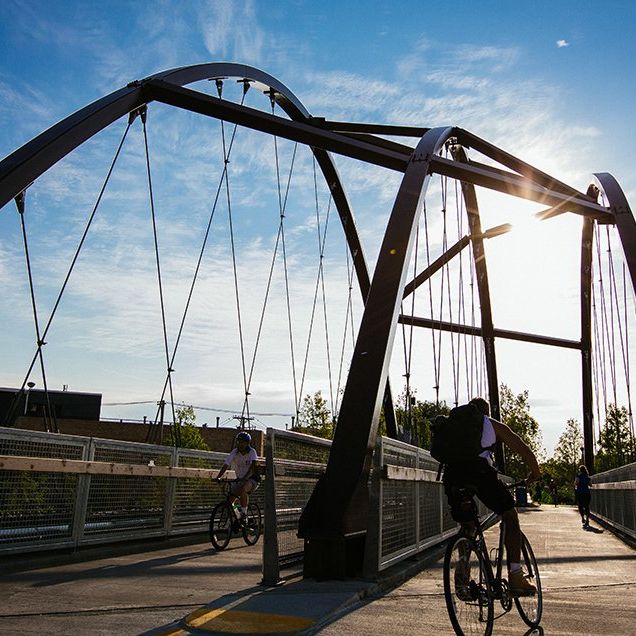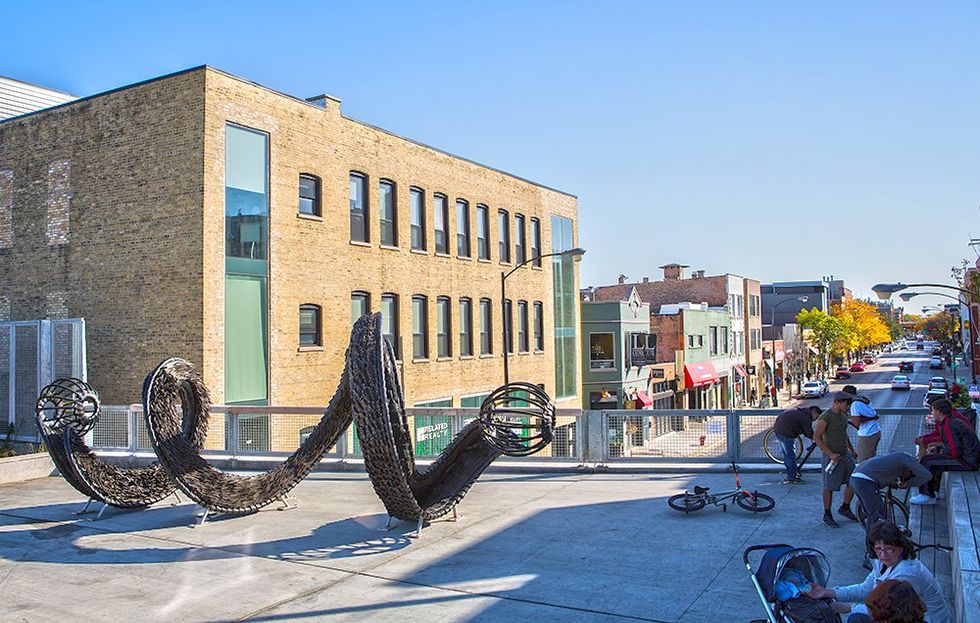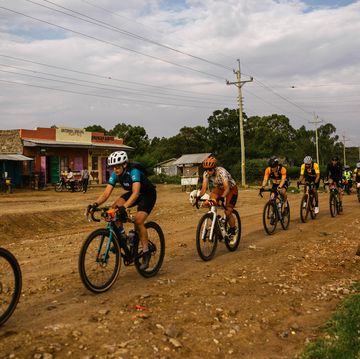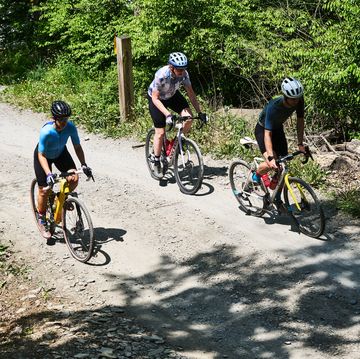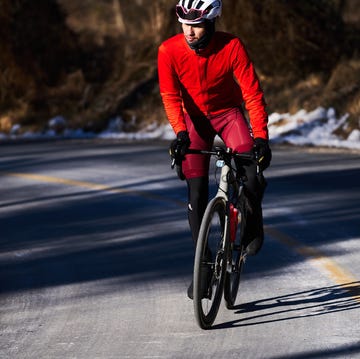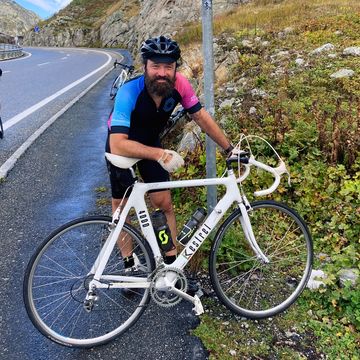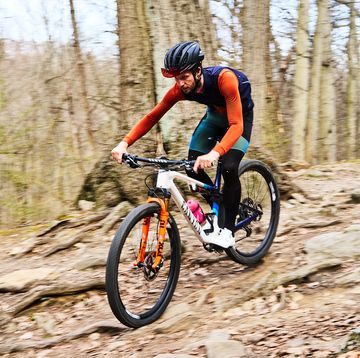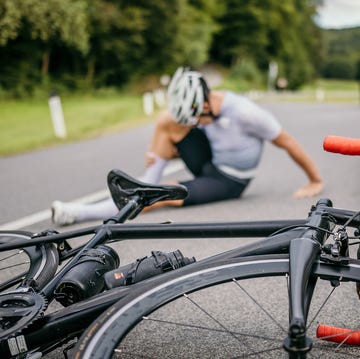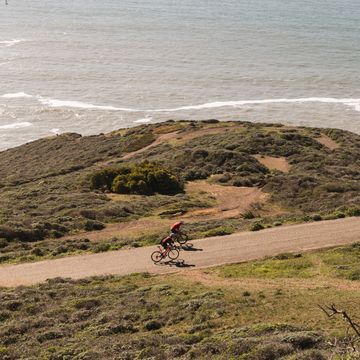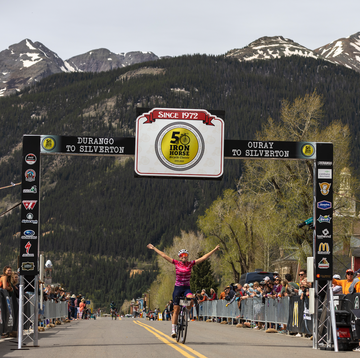In 2001, Ben Helphand found a hole in a fence in the center of Chicago’s Northwest Side, and scrambled up a 17-foot embankment. There he found a railroad line, abandoned for more than a decade. Plants grew over the ties.
“Chicago is flat—I was looking for a viewpoint,” Helphand says. “When you get to the top, you can take a deep breath. You’re away from the bustle of the city, from the traffic, and you feel like you’re miles away. …Everything felt lighter.”
Helphand wasn’t the first person to discover the joys of the dilapidated tracks. People would walk along it with friends, mountain bike, cross-country ski when it snowed, or use the trail to shoot off fireworks.
“I used to see entire families up there with ice-cream cones because they had walked to the Tastee Freez,” Helphand says. “They were using the rail line to get home.”
After experiencing its magic, Helphand was determined to make this elevated urban space better suited to public use as a rail trail. The trail would be unique for its length—almost three miles—and for the fact that it floats above traffic. In a densely populated area with few green spaces, walkers or cyclists would have access to recreational space free of cars.
In 2002, Helphand and five pedestrian and bicycling activists started Friends of the Bloomingdale Trail, a group that used community activism to push the City of Chicago toward making its dream of an elevated trail a reality.
More than a decade later, I saw for myself what propelled them to champion those overgrown miles: I have explored hundreds of paths around the world, but this one is my favorite.
(Document the best rides of your life in the Bicycling Ride Journal!)
Tales of the Trail
In 2016, back home in the states after almost two years of bike touring, I packed my running shoes and enough clothes for a month in the back of my friend Caroline’s VW Golf for a different kind of road trip. She needed help driving her life from Vermont to the West Coast, and I said yes to adventure.
We passed through Chicago after a week of driving and crashed for the night with Eric, a cyclist from London who works in the beer industry. When we met, Eric was hanging freshly printed photos of his cross-country bike tour on the wall.
Eric took us to the rooftop to show us the sunset. The city unfurled like an orange scroll. “You ought to go check out the Bloomingdale Trail tomorrow,” Eric says between sips of lager. “I think you’ll like it.”
The Bloomingdale Trail can be considered one of the most innovative trails in the country, if not the world. It’s successful at being so many different things for so many people: a public art gallery, a garden, a bike-commuting artery, a running track, a place where kids can play away from the dangers of traffic. Four Chicago neighborhoods (Bucktown, Wicker Park, Logan Square, and Humboldt Park) previously without adequate access to outdoor space now have proximity to one of the best.
RELATED: Chicago Is the Best Bike City in the Country
Something about Eric’s nonchalant recommendation of the trail struck me. The next morning, still a bit wobbly from a night of dancing at two gay bars (celebrating our halfway point across the country was mandatory), I laced up my running shoes. Following Eric’s directions, I ran for a few blocks, dodging telephone poles. I used each pause at crosswalks to stretch my hamstrings and calves. It was a jolted run, the kind I’ve come to expect in cities, where my lungs fill with so-so air and solid objects booby trap every stretch of sidewalk.
I sprinted up the Bloomingdale Trail’s smooth entrance ramp, leaving the noise and smell of traffic below. I took a deep breath, turned left, and stepped into the flow of other runners and walkers and cyclists and the occasional child on a scooter.
Without needing to stop at intersections, the movement felt effortless. I jogged on a surface adjacent to the bike lane that was gentle on my knees. At the ripe old age of 24, I have already had an ACL replacement, so these things matter to me. Flowers bloomed on either side of the trail. I couldn’t stop smiling.
This wasn’t what I expected to find in Chicago.
A Quarter-Mile From Inspiration
My favorite bike path up to this point had been the Boondall Wetlands Bikeway in Brisbane, Australia—5.2 miles of off-road paths weave over streams and through paperbark, casuarina, and eucalypt forests. I communed with the kookaburras while speedy people in neon cycling kits overtook me. In the middle of a long-term bike trip, I felt for the first time in months like I could relax in motion. I didn’t have to think about cars.
During my first year of college, I taught a friend to ride on the streets of Boston. I warned her about car doors and blind spots. “You have to have your head on a swivel,” I told her, adopting the words of an ice hockey coach from years before. “You have to anticipate what the cars are going to do before they do it, and always be on the defensive.”
On car-free bike paths, your focus is freed up to take in your surroundings, and the designers of the Bloomingdale Trail make the best use of your full attention.
No matter where you live, you'll likely have to ride near cars. Navigate traffic more safely with this move:
“To recreate the mystery and excitement that was the experience of people who were going up here illegally and getting a thrill from that, in a space that is sanctioned—you do that through plants,” Helphand says. “You do that by how you direct people’s view.”
Michael Van Valkenburgh Associates, the landscape architecture firm that took over the project, deliberately modified the gradient of the trail so that it digs in and rises up. It added sections of maple and sumac and poplar that would grow and bloom over time.
As you move along the trail, your head moves up and down. “The feeling changes as you move through it,” Helphand says. It’s a simple idea with a profound impact: Whether you’re paused or in motion, there’s always something new to look at.
I stopped to read poetry spray-painted on the concrete: “u listen: and now u r undr an ash sea.” After jogging a bit further, I caught my breath under a life-sized dragon sculpture by Chakaia Booker—a Guggenheim Fellowship-winning sculptor—made out of tractor-trailer tires. A woman in a sari and sunglasses, noticing my awe, stopped to ask if I wanted my picture taken.
This simple act, the face-to-face connection, floored me. In cities, I tend to create a wall between myself and passersby—I avoid making eye contact. Up on the Bloomingdale Trail, though, it didn’t feel strange to greet someone else enjoying the sunshine. Something as simple as looking at art together started a conversation.
And goodness is there a lot to talk about on the Bloomingdale Trail. In Helphand’s words: “You’re never more than a quarter-mile away from something different, something interesting.”
The Friends of the Bloomingdale Trail do what they can to facilitate activity around these things. This year, they will host a night-long camping event where the trail crosses St. Louis Avenue. On April 29, there was a guided walk dedicated to the trail’s plant life. The biggest event is the annual Block Party on June 3—the second anniversary of Chicago opening the 606 Park System, for which the Bloomingdale Trail is the main thoroughfare. Even Humboldt Boulevard—comprised of eight lanes—will be shut down for the festivities.
Trail Lessons
Experiencing the Bloomingdale Trail has made me want more out of cities. I don’t want to spend all of my mental energy dodging cars. I want to have corridors (or heck, whole carless streets) that let me intersect with art, poetry, and other humans face to face. I want topographical variations that make the eye move. I want the air to taste good (read: lots of plants).
RELATED: The Coolest Bike and Pedestrian Bridges in the Country
Most of all, I want outdoor spaces that inspire people to get out of their homes and have conversations with one another. And I want those conversations to cross borders of race and gender and age and class and ability.
Helphand, Michael Van Valkenburgh Associates, and the city planners that brought the Bloomingdale Trail to life are proving that community ties can be forged and strengthened on an above-ground rail trail. Cities don’t have to prioritize cars. Cycling and running in a city can be enjoyable, even relaxing, activities.
Thanks to the Bloomingdale Trail, I know that with care and commitment, bike paths can—and should—be beautiful.
